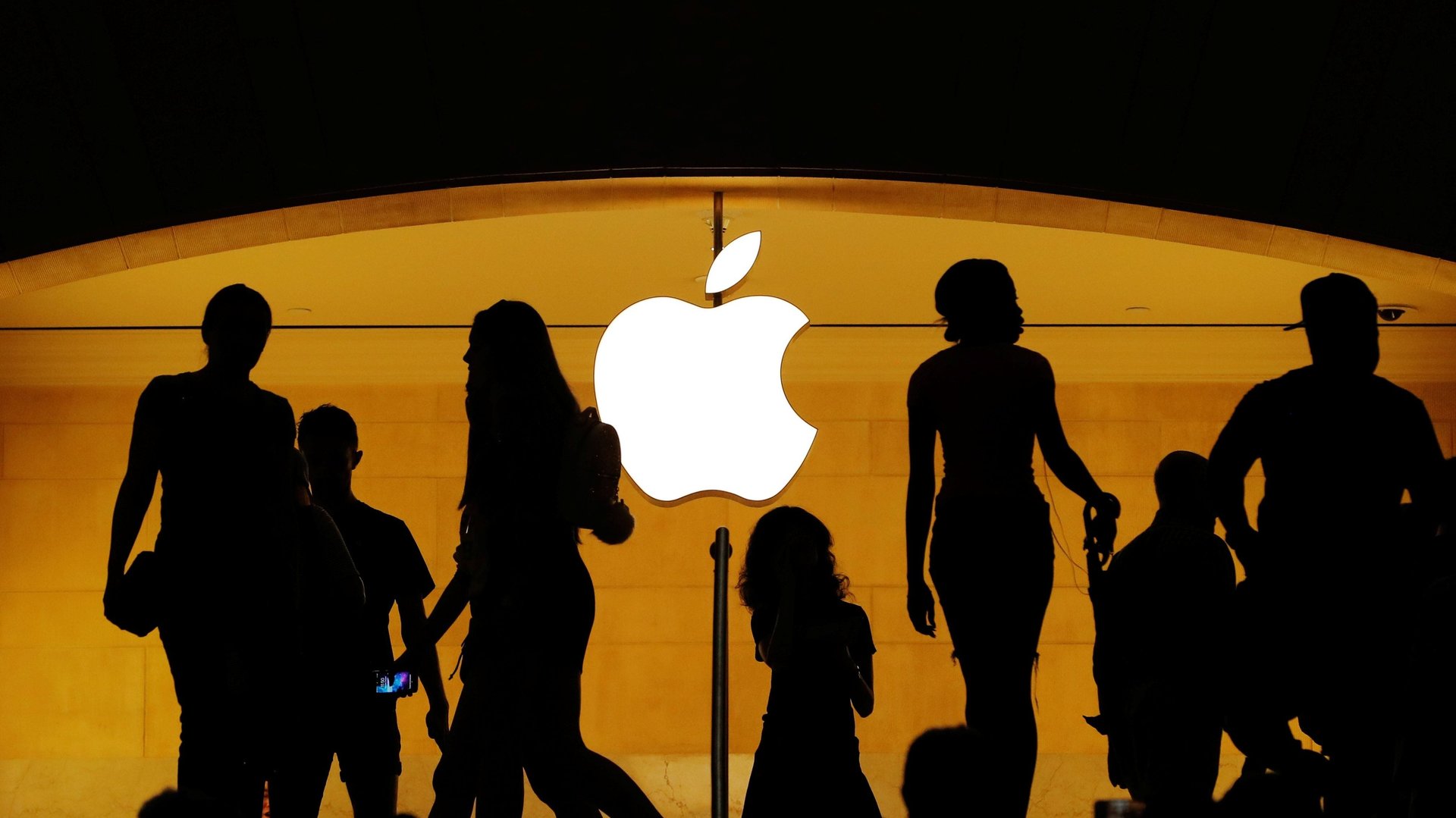We no longer have any idea what Apple is doing
This will be a sad day for obsessive Apple-watching nerds everywhere. (And, most likely, those on Wall Street.)


This will be a sad day for obsessive Apple-watching nerds everywhere. (And, most likely, those on Wall Street.)
Today (Jan. 29), Apple will report its first-quarter earnings—its fiscal year starts in October—and, for the first time in years, it will not report how many units it has shipped of each of its main products. Analysts have long used these figures as a measure of the company’s health. Perhaps because the company hasn’t really been experiencing growth in shipments for any of its products, Apple announced these figures weren’t as important as its revenue numbers and stopped reporting them. So we’ll never get to make charts like this again:
The reason behind Apple’s move is likely twofold. As it reaches a saturation point with many consumers, the company is shifting towards selling more and more services, instead of just relying on hardware sales. Its services business, which includes Apple Music subscriptions and movie and app sales, has seen massive success in recent years, growing to the size of a Fortune 100 company on its own.
And then there’s the more glaring reason: We might have finally reached the iPhone’s saturation point. The smartphone has been Apple’s cash cow for the better part of a decade, at times accounting for more than two-thirds of quarterly revenue. The company has put an emphasis in creating more models targeted at various different prices, while steadily increasing the price of its top-of-the-line devices. The iPhone XS Max, released in September, starts at $1,100.
On Jan. 2, Apple halted trading on its shares and updated its guidance for the 2018 holiday quarter, expecting to fall short of the estimates it had provided in November. CEO Tim Cook blamed weak sales in China, as well as in some more developed markets. Apple initially had said it expected to generate between $89 billion and $93 billion for the quarter but its revised estimate brought the target down to $84 billion—about $4 billion less than it generated in the same quarter in 2017.
Growth in China has long been a sticking point for analysts, as many have argued the company will need to crack developing nations like it and India, with their massive growing middle classes, to continue the trajectory Apple has been on for over a decade now. In China, consumers have not seen a reason to buy Apple’s expensive devices over local options that offer much of what the iPhone does for a fraction of the cost. Apple is expected to make a greater push into India in 2019, but it’s not clear whether the results will be any different than they have been in China, as much of the market has been flooded with cheaper phones.
Apple’s stock price took a hit when it announced the guidance shortfall, although it’s more or less recovered. Its price is down significantly from its last earnings report, however, amid growing trade tensions between the US and China (where it still assembles most of its devices) and fears that its latest devices aren’t as desirable as past models.
It’s tough to tell from the outside how dire things really are. With Apple no longer reporting unit sales, investors will have to rely on revenue figures, which currently remain astronomical.
“With iPhone weakness well-known, the focus will be on services,” analysts from UBS said in a report shared with Quartz. Apple will report its margin on its services business for the first time on its call and it’s expected to have another bumper quarter. Still, there’s just no getting around the fact that falling iPhone sales can’t just be propped up by services revenue. Not yet, at least.
Apple has been working on original content, and has long been rumored to be building out a streaming service to rival those of Netflix or Amazon Prime Video, that could be exclusive to Apple devices. It reportedly also wants to sell subscriptions to other TV services, like HBO or NBA League Pass, in a move to completely replace consumers’ TV packages.
Whether becoming the 21st-century cable provider will be enough to combat the reality of consumers not wanting to buy increasingly expensive iPhones (the average pay-TV bill in the US is $107) to keep Apple growing in the short-term is unclear. And now we’ll have less insight into what it’s selling.